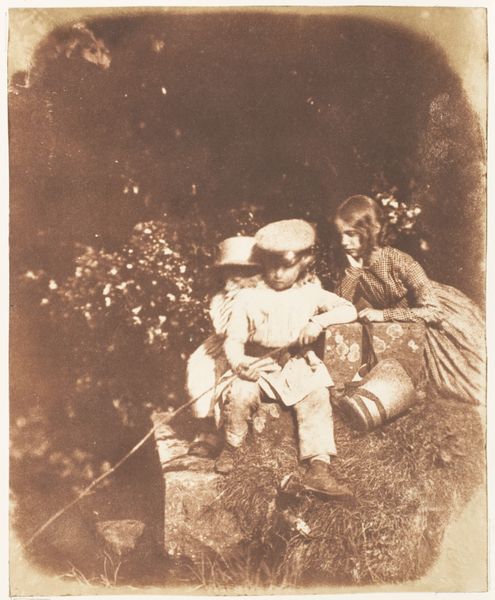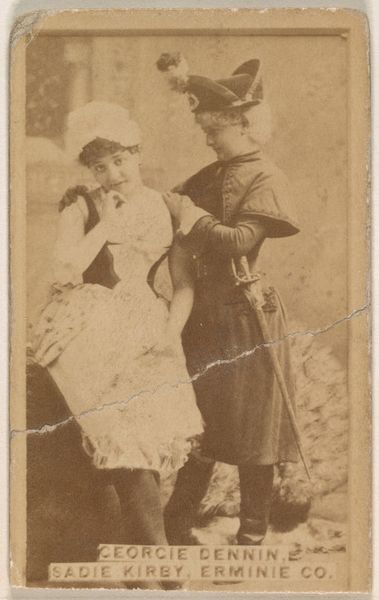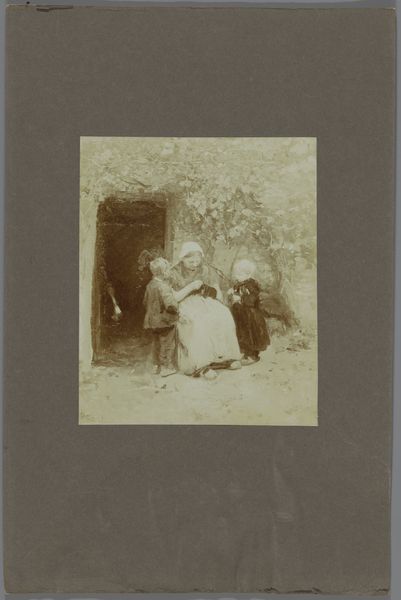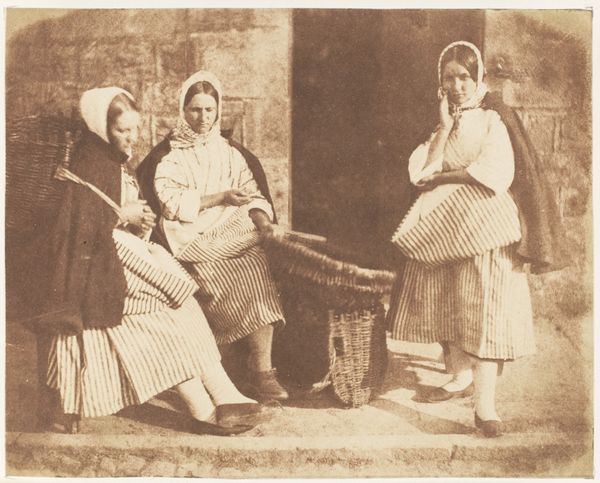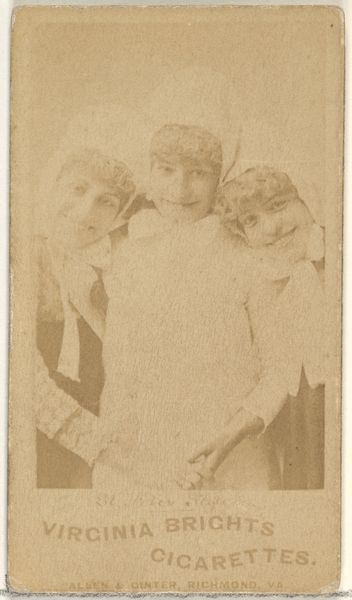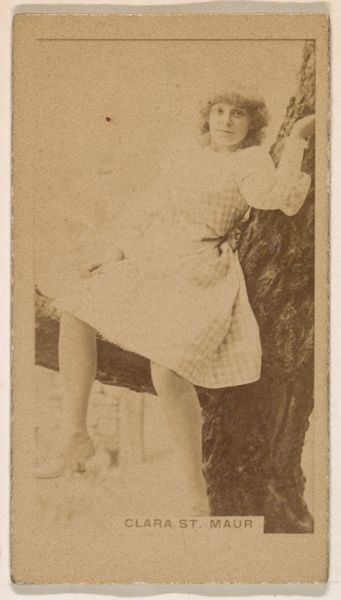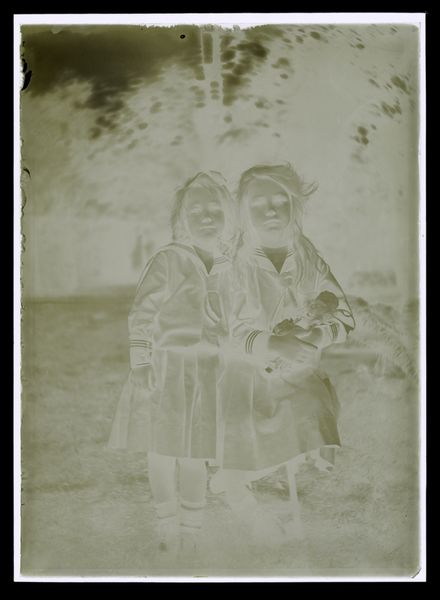
#
wedding photograph
#
photo restoration
#
wedding photography
#
archive photography
#
historical photography
#
portrait reference
#
photo layout
#
19th century
#
men
#
celebration photography
#
portrait character photography
Copyright: Public Domain
Curator: Before us hangs "Newhaven Fishwives," a striking photograph realized by Hill and Adamson between 1843 and 1847. It currently resides in the collection of the Metropolitan Museum of Art. Editor: It’s…muted. All browns and creams. The composition leads me to see almost a pyramidal shape amongst the women. Their arrangement feels surprisingly balanced, yet somber. Curator: Precisely! The tonal range, so limited by the photographic processes of the time, forces us to concentrate on the subjects' forms and relations. Hill and Adamson understood the power of tonal variation within a small range. Observe the compositional elements; the subjects dominate the pictorial space. Editor: As if their presence _is_ the content. It begs the question: who were these women? And what was the context surrounding the photograph's production? It presents women, undoubtedly working-class, in what seems to be almost staged simplicity. Curator: An astute observation. The aesthetic recalls genre painting but note that there isn't perfect resolution: it possesses this remarkable texture which indicates its unique status as photographic print. Editor: What interests me is how Hill and Adamson used this new medium to portray the lives of working-class women, providing a window into 19th-century Scottish society, however curated. We tend to think of early photography focusing on the elite, and images such as this document previously unconsidered communities. Were they conscious that they documented an historical process? Curator: And did they perhaps create a social document intended to portray authentic community or was their artistic intention more formal: how far could photography stand comparison to other, older genres like history painting? The photograph is compelling for those structural tensions. Editor: Ultimately, this quiet, intense image, whatever its context, prompts one to imagine and explore that moment caught in time. Thank you, Hill and Adamson, for these compelling arrangements. Curator: Indeed. A captivating work, pregnant with meaning residing not only in the image itself but in the web of associations it inspires.
Comments
No comments
Be the first to comment and join the conversation on the ultimate creative platform.
